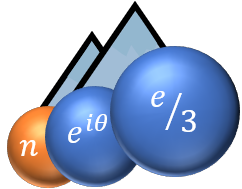In this work, we show, from quantum electromagnetic grounds, that the charge creation operator may satisfy anyonic relations. More generally anyonic relations should be observable in any 1D bosonic system (like phonons, plasmons, etc.).
To specify, we consider the physical experiment by A. Anthore et al. “Circuit Quantum Simulation of a Tomonaga-Luttinger Liquid with an Impurity”[1]. In this experiment, the predicted Tonomaga-Luttinger power law for conductance versus temperature and the DC current versus DC voltage are accurately checked for Tomonaga-Luttinger interaction parameter K=1/2, 2/3, ¾, and 4/3 for various transmission τ of the quantum impurity.
In the experiment [1], a QPC transmitting a single mode of transmission τ is in series with a highly resistive impedance R=(K-1)h/e2. According to the most physical representation of dissipation for tunneling, the resistor R can be described by a semi-infinite electromagnetic transmission line of characteristic impedance ZC=R and terminated, at infinity by the resistance R assumed at zero temperature. We show that the operator C(t) creating a charge q at time t obeys an anyonic relation : C(t)C(t')=C(t')C(t)exp(i\theta) where \theta, the anyonic phase, is related to the charge q and to the characteristic impedance and can take any real value.
Finally, we consider K=1/m with m=3, 5, ... to make contact with the case of the Fractional Quantum Hall Effect. We particularly concentrate on the weak backscattering limit (WB) for which 1-τ
|
|
|
|
Anyonic relations in circuit QED. Application to FQHE composite fermions.
1 : CEA- Saclay Commissariat à l'énergie atomique et aux énergies alternatives
|

 PDF version
PDF version
